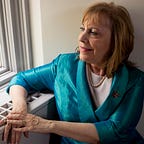What Autumn Leaves Teach Us
In the monthly Poetry & Spirituality workshop I attend, one of the poets in the group (who happens to be a medical doctor) offered a wonderful poem at our October gathering, reflecting on how the fall colors we find so inspiring are actually the true colors of the leaves.
What we think of as a tree’s normal color — green — is the function of a manufacturing process, one that spreads clorophyll’s green pigment throughout its leaves. When trees begin to rest in the fall, their inner factory winds down. Leaves return to their natural state. It is like a woman who washes off her make up at night to reveal a different kind of beauty.
Here in central Illinois where I live, the trees are just beginning to turn. Maples are leading the way with their bold reds and sunlit shades of orange. When I gaze on them, I’m reminded that we too can slow down in autumn, practice a stillness that is more difficult to do in summer, and reflect on what are our true colors.
For the past several weeks, I have been reading the writings of the great African American visionary and mystic, Howard Thurman, preparing for a retreat I’ll be guiding later this month. One of Thurman’s main themes is the search for the authentic self.
In a commencement address he gave at Spelman College in 1980, just a year before he died, Thurman observed, “There is something in every one of you that waits and listens for the sound of the genuine in yourself. It is the only true guide you will ever have. And if you cannot hear it, you will all of your life spend your time at the end of strings someone else pulls.”
Thurman had a wonderful teacher in his grandmother, Nancy Ambrose, who spent the first 20 years of her life as a slave. She told Thurman of the African American preacher who would end each of his sermons at her plantation by saying, “You are not slaves … you are God’s children.”
Thurman internalized the attitude that he — and every other person — is a gift from God. It was a belief that allowed him to break through barriers. He taught at majority white Boston University, before going on to co-found the first inter-racial, inter-religious church in the U.S. — in San Francisco— the Church for the Fellowship of All Peoples.
The search for the true self also involves work, as Thurman well knew. It means taking time to be still, to get to know ourselves. “We must find sources of strength and renewal for our own spirits, lest we perish,” he wrote. He knew this would not be easy for many of us “because the entire nervous system and body have been geared over the years to activity, to overt and tense functions.”
Still, what Thurman called “the art of being still” can become a habit, if practiced often enough. He offers this advice: “If possible, find a comfortable chair or quiet spot where one may engage in nothing. There is no reading of a book or a paper, no thinking of the next course of action, no rejecting of remote or immediate mistakes of the past, no talk. One is engaging in doing nothing at all except being still.”
Thurman often encouraged his students to continually ask themselves, “What do I want” and What do I want, really?”
A question we might want to ask, is “Who am I?” and “Who am I, really?”
Autumn is a good time to begin that kind of reflection. May we think of those questions every time we look upon the fall foliage, boldly displaying their “true colors.”
For more information on Howard Thurman, watch the wonderful documentary “Backs Against the Wall” https://www.youtube.com/watch?v=mdjLfORZ7Jomy or read Bruce Epperly’s excellent book, “Prophetic Healing: Howard Thurman’s Vision of Contemplative Activism.” To join my Nov 13 retreat on Howard Thurman, sponsored by the Chicago Cenacle, please visit https://www.cenaclesisters.org/.../our-great-african.../
